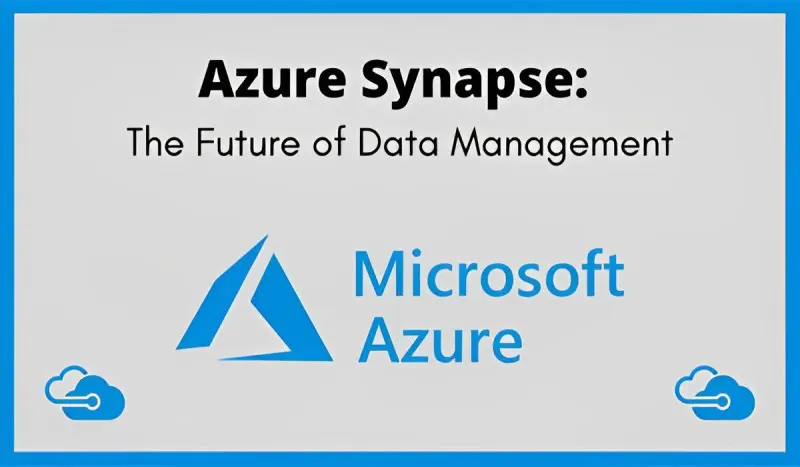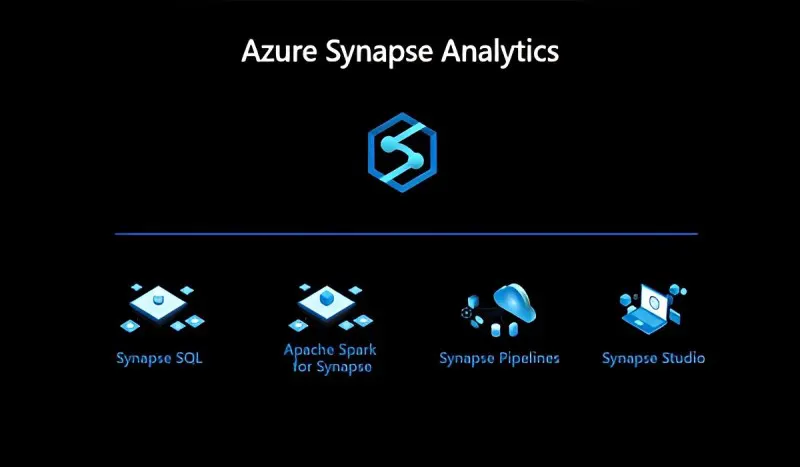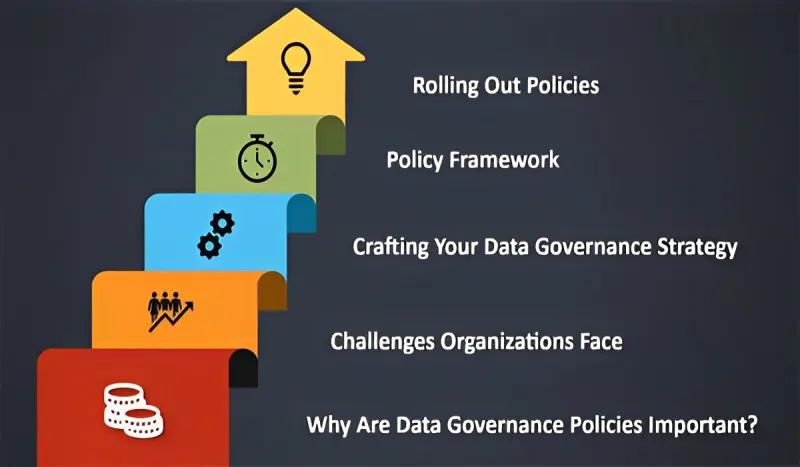
Streamline Data Governance Efforts with Azure Synapse: A Comprehensive Guide to Automation
Image source: https://analyticslearn.com/azure-synapse-the-future-of-data-management
What is Azure Synapse?
Azure Synapse is a recently introduced solution consolidating several data and AI capabilities into one platform.
Azure allows users to choose between two distinct options for utilization: Serverless operations or dedicated virtual machines.
Regardless of the chosen solution, users will have a unified experience for the ingestion, exploration, preparation, transformation, and serving data to meet their immediate business intelligence (BI) and machine learning requirements. Moreover, due to its use of Azure Synapse Analytics data governance, users are granted access to security and compliance capabilities of enterprise-level quality.
Its hybrid strategy allows clients to choose between running their operations in the public cloud or on-premises. Regardless of the option chosen, we provide a user-friendly solution to manage data from anywhere, eliminating worries about storage management.
Azure Synapse offers a range of essential services to its users
Azure is a comprehensive data management platform that has several major features and capabilities. It offers support for both conventional platforms such as SQL Server and contemporary services like Hadoop, Spark, and Kafka.
Overview of data governance and issues associated with its implementation.
1. The implementation of data governance is of paramount importance in the contemporary era characterized by the extensive use of data. Data governance refers to the comprehensive framework of procedures, regulations, and technological systems used to safeguard the accessibility, accuracy, and protection of data within an organizational setting. Organizations have a multitude of issues in properly handling and controlling their data due to the escalating amount of data being created and the continuously shifting legal environment.
2. Implementation of data governance is of paramount importance in the contemporary era characterized by the widespread use of data. Data governance refers to the comprehensive framework of procedures, rules, and technical systems used to ensure the accessibility, accuracy, and protection of data in an organizational setting. Due to the increasing volume of data and the ever-changing legal environment, organizations have many problems in handling and controlling their data properly.
3. Another significant problem lies in the assurance of data quality and accuracy. Inadequate data quality has the potential to provide incorrect insights and judgments, hence negatively affecting the functioning of corporate processes. Efforts in data governance should prioritize activities such as data cleaning, standardization, and validation to guarantee the accuracy, consistency, and reliability of the used data.
Protect, manage, and govern your enterprise data with our Azure Synapse expertise.
4. In addition, the protection of data privacy and safety are important components of data governance. In light of the increasing occurrence of data breaks and the implementation of stringent legislation like the General Data Protection Regulation (GDPR), it has developed to be authoritative for firms to accept strong safety procedures to safeguard sensitive information. This has the formation of access restrictions, encryption of data, and surveillance of data used to mitigate unauthorized access or breaches.
5. In a perfect situation, the fulfillment of data governance at its maximum capacity and scope necessitates the presence of committed personnel to assume these duties. Appointing a data owner is not a complex task, since it primarily entails assigning a senior-level individual with the responsibility of making additional choices. However, the task of locating a data steward presents a more complex one.
6. Lack of expertise is a significant barrier to achieving return on investment (ROI) in data governance, prompting many businesses to train individuals with group knowledge to fill data stewardship roles. In the early stages of organizational establishment, the position of data steward often assumes a part-time capacity and is filled by an individual from the business domain who regularly interacts with data. In the information technology field, a person assigned the role of data architect or data analyst often performs additional duties on a part-time basis. Analysts for businesses and business intelligence (BI) professionals have the necessary qualifications to serve as data curators because of their deep understanding of data and their developed connections with technical staff on the team.
7. Siloed data sometimes arises due to divergent methodologies in data operations and disparities in technological versions. One aspect that is sometimes overlooked by organizations throughout the process of modernization is the strategic planning and execution of legacy data system migration. These systems continue to fulfil their intended purpose, and the act of upgrading them entirely is cost-prohibitive. Moreover, in cases when the content of the historical data is unknown, pursuing a resolution via downstream integration proves to be a more cost-effective approach.
Let’s check the comparison between Serverless with Serverless hosting

Image source: https://data.solita.fi/tag/spark/
The use of Serverless architecture is recommended for those seeking to prioritize software application development, while the adoption of dedicated infrastructure is advised for those who want enhanced autonomy and oversight over their technological framework. This particular choice is well-suited for applications that possess distinct specifications or experience substantial levels of user activity, necessitating the allocation of specialized resources. Although Serverless hosting has advantages in terms of flexibility and simplicity, dedicated ecommerce hosting gives a higher level of control and customization. Enterprise data warehousing is known as the practice of keeping and handling huge volumes of data in the company. It includes the merging of data from several bases into an essential repository, called a data warehouse
If one wants to build an enterprise-grade quality data warehouse in a cloud environment, Azure is the best choice. The process of centralization allows companies to gain a complete and inclusive perspective of their data, providing useful insights and increasing the ability to make better decisions. The process of data warehousing covers the activities of data transformation and cleaning, which are carried out to ensure data accuracy and consistency.
The platform provides two options, namely managed (HDInsight) and unmanaged (HDInsight Local), which allow users to choose the level of support they need from Microsoft for their company.
Self-service business intelligence (BI) refers to the practice of enabling end-users to access and analyze data independently without requiring the assistance of IT or data professionals.
Azure offers a wide range of tools and resources that meet a variety of needs, including creating visually appealing presentations as well as executing complex analytical processes. Moreover, Azure provides convenient access to extensive datasets, facilitating the discovery and use of significant volumes of information. In addition, self-service business intelligence (BI) technologies often include interactive dashboards and customized reports, enabling users to customize their data analysis according to their needs. By implementing self-service business intelligence (BI), enterprises can harness the potential of data and enable their teams to adopt a more flexible, proactive, and data-centric approach.
The field of advanced analytics offers the best techniques and methods used to analyze complex data sets to gain valuable insights and make informed decisions. These techniques go beyond traditional analysis methods.
Azure, with its extensive machine-learning capabilities, offers enterprises the opportunity to gain important insights from vast amounts of data. These capabilities are easily accessible through a simple REST API. This empowers individuals to draw conclusions based on higher levels of information, increase operational efficiency and uncover innovative prospects.
Ensure data integrity, compliance, and security with our robust data governance solutions.
Azure Synapse offers valuable capabilities for addressing the difficulties associated with Data Governance let us know how.
1. One of the primary advantages offered by Azure Synapse is its capacity to automate data governance procedures. Traditional methodologies for data governance often include manual processes and disjointed systems, resulting in inefficiencies and heightened exposure to risk. Nevertheless, Azure Synapse offers the capability for enterprises to automate certain essential data governance functions, including data intake, data profiling, data categorization, data masking, and data lineage.
2. By using automation capacities, organizations have the potential to optimize efficiency and save critical time and resources, all while maintaining a high standard of data governance that is both consistent and accurate. Azure Synapse offers a consolidated perspective and management of data assets, facilitating the implementation of regulatory requirements and the preservation of data integrity across the company. This feature benefits data managers and executives by simplifying their tasks.
3. In addition to its automation capabilities, Azure Synapse provides a comprehensive suite of security protections designed to safeguard sensitive data. By using integrated threat detection mechanisms and employing modern encryption techniques, organizations may effectively protect their valuable data assets and ensure adherence to industry-specific requirements and standards.
4. Data quality concerns may also arise due to user mistakes or insufficient training. Errors can be introduced by users unintentionally during the processes of data integration, transformation, or analysis. Training and awareness initiatives have the potential to reduce these concerns by promoting user comprehension and adherence to optimal practices when using the lakehouse ecosystem.

Image source: https://medium.com/@dnyanesh.bandbe88/implementing-data-governance-policies-your-roadmap-to-success-%EF%B8%8F-22881ed10bdb
Step-by-step guide to setting up Azure Synapse for automated data governance
Data governance policies play a crucial role in this context. Data governance (DG) refers to a comprehensive framework including several disciplines, including structures, rules, and procedures, that include the people, processes, and information inside an organization. The primary objective of DG is to ensure the maintenance of high-quality corporate data during its entire lifespan. The task at hand involves the comprehensive administration of data inside a company, including aspects such as availability, usability, integrity, and security.
1. The first step in the process is evaluating and analysing the data governance needs
Before embarking on the setup procedure, it is important to have a comprehensive understanding of the unique data governance needs of your firm. The identification of significant areas that need attention includes data categorization, access restrictions, data retention rules, and adherence to regulatory compliance. The preliminary evaluation will assist in customizing the automation configuration to align with your particular requirements.
2. The second step involves the configuration of data categorization and labelling
The categorization of data is an essential component of data governance. Azure Synapse offers a range of integrated functionalities that enable users to automatically categorize and label their data. Please describe your categorization criteria and labelling procedures, taking into consideration aspects such as sensitivity, secrecy, and any other pertinent considerations. Azure Synapse offers a user-friendly interface that facilitates the configuration and management of data categorization and labelling rules.
3. The third step involves the implementation of access restrictions and permissions
The implementation of access control measures is of paramount importance in ensuring the preservation of data privacy and security. Azure Synapse provides the capability to establish precise access restrictions and permissions for various user roles and groups. Roles and access levels are established by job duties, responsibilities, and the amount of sensitivity associated with the data. Automation enables the uniform application of access restrictions across various data assets.
4. The fourth step is the implementation of data retention regulations
A data retention policy serves to provide clear guidelines about the appropriate storage or archiving of data, including the specific locations and durations for such activities. After the designated retention time, a data set has the option to either be erased or transferred to secondary or tertiary storage as historical data, based on the specific needs and demands of the organization. Azure Synapse provides the capability to establish and mechanize data retention rules to the specific requirements of a company. Establishing regulations for the automated archiving or removal of data within a certain timeframe is crucial to ensure the effective management of data.
Bottom Line
It is important to note that the process of effective implementation is a continuous and continuing task. This pertains to the integration of data governance principles into a corporate culture, resulting in the benefits of well-informed decision-making, mitigated risks, and quicker procedures.
Azure Synapse Analytics is a significant advancement in the field. However, the data platform architecture is lacking in terms of automation capabilities and cost control methods. Azure Scope has great potential, but, it can’t provide real-time documentation and its accessibility is limited for the majority of non-technical individuals inside the business.



